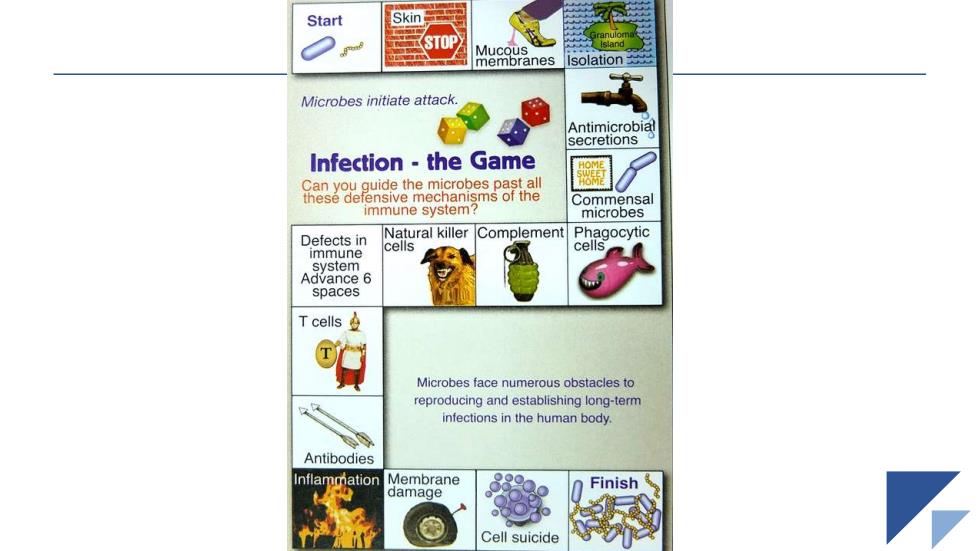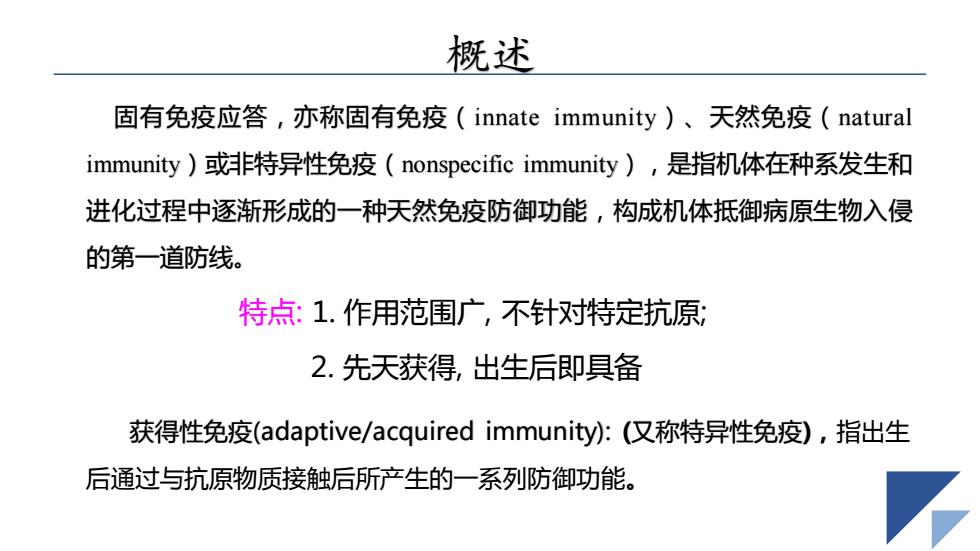
01 前 言
前 言

Threats to the individual Cancer Viruses Parasitic worms Fungi Bacteria Toxins latrogenic procedures
Threats to the individual

Protection from microbial invasion Outside the body Within the body Barriers Innate Adaptive Immune Immune Microbes: ·mechanical System System Microbes: hundreds few,if of billions ·chemical any biologic
Protection from microbial invasion

Start Skin Mucous membranes Isolation Microbes initiate attack Antimicrobial secretions Infection-the Game Can you guide the microbes past all these defensive mechanisms of the Commensa immune system? microbes Defects in Natural killer Complement Phagocytic cells cells immune system Advance 6 spaces T cells Microbes face numerous obstacles to reproducing and establishing long-term infections in the human body Antibodies Inflammation Membrane Finish damage Cell suicide

概述 固有免疫应答,亦称固有免疫(innate immunity)、天然免疫(natural immunity)或非特异性免疫(nonspecific immunity)),是指机体在种系发生和 进化过程中逐渐形成的一种天然免疫防御功能,构成机体抵御病原生物入侵 的第一道防线。 特点:1.作用范围广,不针对特定抗原: 2.先天获得,出生后即具备 获得性免疫(adaptive/acquired immunity):(又称特异性免疫),指出生 后通过与抗原物质接触后所产生的一系列防御功能
概述 固有免疫应答,亦称固有免疫(innate immunity)、天然免疫(natural immunity)或非特异性免疫(nonspecific immunity),是指机体在种系发生和 进化过程中逐渐形成的一种天然免疫防御功能,构成机体抵御病原生物入侵 的第一道防线。 特点: 1. 作用范围广, 不针对特定抗原; 2. 先天获得, 出生后即具备 获得性免疫(adaptive/acquired immunity): (又称特异性免疫),指出生 后通过与抗原物质接触后所产生的一系列防御功能